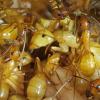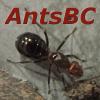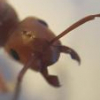Saw these 4/18 in Anne Arundel County Maryland. Have actually seen them along the road for at least 2 years and decided to check them out. There are quite a few of the mounds some bigger some smaller in a relatively small area. I know the pictures suck but was hoping y'all may have some idea. I was hoping I'd have better pics by now from my friend as we captured a couple workers but all I have is these for now. They definitely sting bite or something cause one got on my leg. Did not leave a mark though.





Edited by Acutus, May 3 2019 - 12:58 PM.























